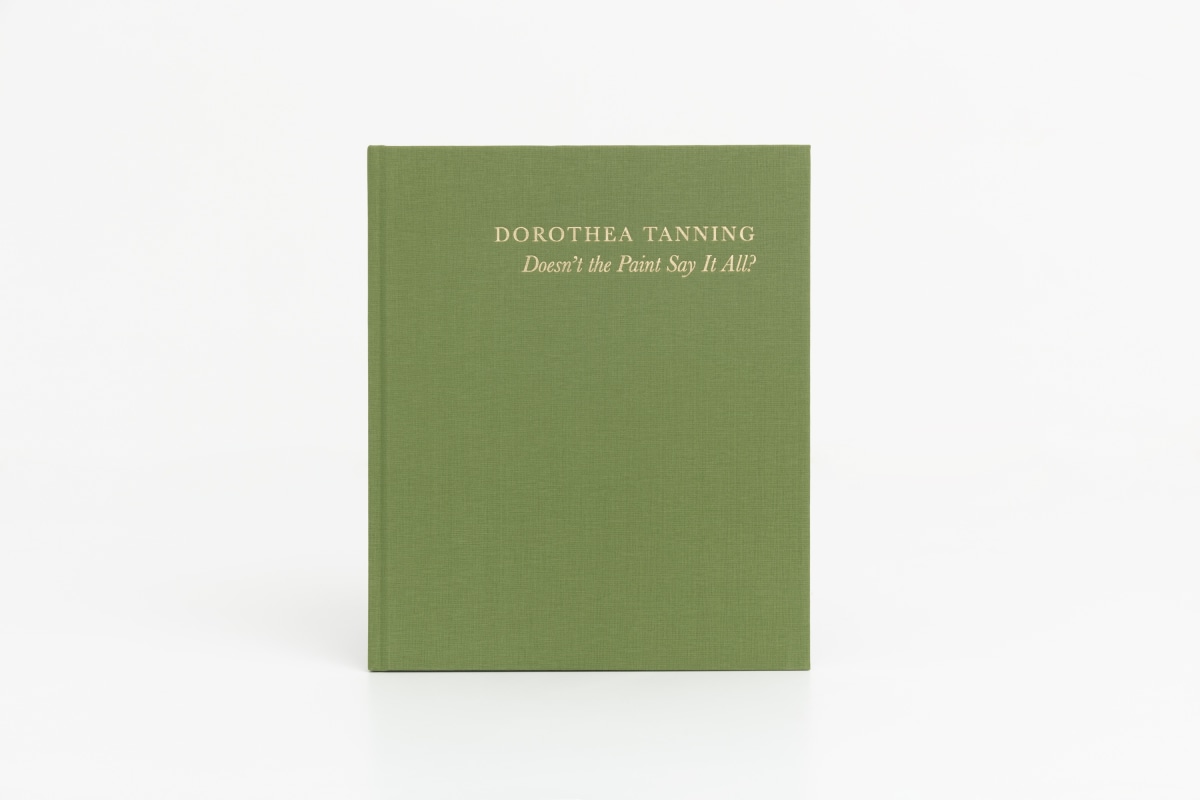Dorothea Tanning: Doesn't the Paint Say It All?
-
-
Dorothea Tanning: Doesn’t the Paint Say It All? brings together canvases and works on paper drawn from the artist’s remarkable oeuvre to present the most comprehensive solo presentation of her work for US audiences in decades. This is the first exhibition at Kasmin dedicated to the work of Tanning, whose pioneering explorations into the space between abstraction and figuration continue to influence vital painters today.
-
Spanning four decades from 1947-1987, and including significant examples on loan from major museum collections and important private collections, the exhibition will trace Tanning's stylistic arc from its roots in surrealism through interrelated phases of the artist's career to what became a deeply original and timeless painting practice. Across these bodies of work, Tanning's unique formal language is characterized by the tension between figuration and abstraction. Her insistence on mystery and enigma encourages an experience of ongoing discovery for the viewer.
-
-
Dorothea Tanning: Doesn't the Paint Say It All? takes its title from the artist's own writing, and on the occasion of the exhibition, Kasmin will publish a fully illustrated, scholarly catalogue, featuring Tanning's essay entitled "To Paint," a poetic and impassioned text first published in 1986 that resembles a personal manifesto on her own creative process and the nature of the medium. The book will also include reflections on Tanning's paintings by three art historians and scholars of surrealism: Mary Ann Caws, Katharine Conley, and Victoria Carruthers (author of the recent monograph Dorothea Tanning: Transformations, Lund Humphries, 2020), with an introduction by Pamela S. Johnson, Executive Director of The Dorothea Tanning Foundation and The Destina Foundation. Both endowed by the artist, the foundations have collaborated in the staging of this presentation at Kasmin.
The exhibition charts Tanning's journey from her surrealist dreamscapes of the 1940s through the highly fragmented, prismatic, and layered imagery that emerged in her work in the 1950s and 60s, when her paintings delight in the refraction of both light and of reality. In works such as Le Mal oublié (The Ill Forgotten) (1955) and Aux environs de Paris (Paris and Vicinity) (1962, Collection Whitney Museum of American Art), Tanning pushes both spatial and formal ambiguity just shy of the limits of pure abstraction. Cloudy swathes of gestural paintwork are built in layers, covering and recovering any previously recognizable imagery in order to obscure then reveal it. In paintings from the 1960s such as Far From (1964) and Inutile (1969), biomorphic shapes suggestive of the presence of figures and flesh, appear caught in a moment of dynamic change-a weather storm or an ascension, a disaster or dream.
-
-
"Around 1955, my canvases literally splintered. Their colors came out of the closet, you might say, to open the rectangles to a different light. They were prismatic, surfaces where I veiled, suggested and floated my persistent icons and preoccupations, in another of the thousand ways of saying the same things."
—Dorothea Tanning -
-
Examining Tanning's return toward figuration, the exhibition will include later works that are equally enigmatic and disquieting. Pour Gustave l'adoré (1974), for instance, speaks to Tanning's darker impulses with its split composition consisting of a dense black-brown that covers the upper half of the picture plane and an incandescent green-blue limb with an aquatic tail, emerging sinisterly from beneath. Named for the 19th-century French artist Gustave Doré, who created illustrations for such volumes as Dante's Divine Comedy and Coleridge's Rime of the Ancient Mariner, the work evokes the same sense of supernatural danger as Doré's subjects.
Conversely, the expressionistic and ecstatic swirls of pigment that compose Tannings final paintings are grounded by their more discernible figures. Completed in New York, where Tanning returned after living for several decades in France, the paintings Woman Artist, Nude, Standing (1985-87) and Door 84 (1984) have not been seen in the city since the time of their creation. Invoking the subjects of Tanning's early surrealist paintings such as Birthday (1942) and Eine Kleine Nachtmusik (1943) through a more contemporary lens, these works embody the tension, both psychological and physical, inherent within Tanning's pictorial realms. As a mixed-media painting, Door 84 is demarcated by the addition of a found door, a sculptural element that projects into the viewer's space while connecting its two painted halves. Rendered among vibrant bursts of color, two female figures, one on either side of the door, strain against its opening as if desperate to keep one another at bay. The door itself both divides and joins, symbolic of Tanning's ongoing examination of tension and balance between figuration and abstraction and the thresholds between what we see and what lies deeper. -
Works
-
All images © 2022 The Destina Foundation / Artists Rights Society (ARS), New York.
-
Publications
-
About the Artist
 © Brigitte Lacombe
© Brigitte Lacombe
























